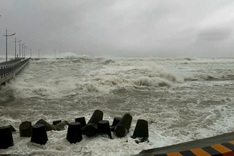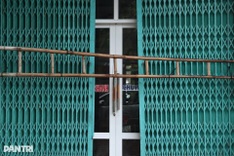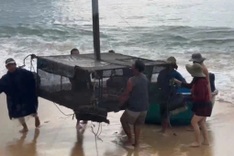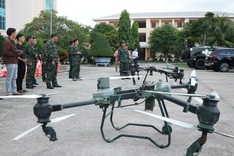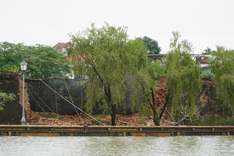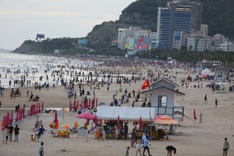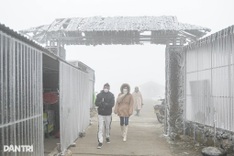Up to half of the Rolls-Royce engines of the type that disintegrated on an Airbus superjumbo this month may need to be replaced by the three carriers that use them, the Qantas chief executive said Thursday.
 |
| In this Nov. 13, 2010 photo provided by the Australian Transport Safety Bureau, an engine that failed on a Qantas A380 superjumbo is removed from the plane at Singapore Airport in Singapore. The stricken engine is being dismantled for closer scrutiny to find the cause of the failure during a flight from Singapore to Sydney on Nov. 4 |
Australia\'s Qantas, Singapore Airlines and Germany\'s Lufthansa fly A380s powered by four giant Rolls-Royce Trent 900 engines, with a total of 80 engines on 20 planes.
Qantas CEO Alan Joyce told reporters on Thursday that Rolls-Royce had indicated that the number of engines that needed to be replaced was "40 engines worldwide."
"That\'s what they think they\'ll have to change," he said.
"Rolls-Royce are still working through the criteria for which engines need to be changed," Joyce said one the sidelines of an event in Sydney unrelated to the A380 incident. He said that 14 of the 24 engines on Qantas planes may have to be replaced.
It was not clear what impact the engine replacements would have on future A380 deliveries, but it raises the prospect of delays in filling orders.
London-based Rolls-Royce declined to comment. The engine maker\'s shares were down 0.2 percent at 598.5 pence in the first hour of trading on the London Stock Exchange.
One of the Trent 900s on a Qantas superjumbo caught fire and blew apart shortly after takeoff from Singapore on Nov. 4, in what experts say was the most serious safety incident for the world\'s newest and largest passenger plane. The Sydney-bound flight returned safely to Singapore where it made an emergency landing.
Investigators say leaking oil caught fire in the Qantas engine on Nov. 4 and heated metal parts, causing them to disintegrate. Experts say chunks of flying metal cut hydraulics and an engine-control line in the wing of the A380, causing the pilots to lose control of the second engine and some of the flaps on the damaged wing in a situation far more serious than originally portrayed by Qantas.
The European air-safety regulator last week issued an urgent order requiring all operators of Trent 900 engines to conduct repeated inspections of several parts, including the oil service tubes, to ensure there was no "abnormal" leakage. If any such leaks are found, the airlines are prohibited from using the engines.
All six of Qantas\' A380s have been grounded while extensive safety checks and fixes are carried out, and the airline says three Trent 900 engines have been removed in addition to the one that blew out. Singapore Airlines, with 11 A380s, and Lufthansa, with three, briefly grounded some of their planes after the Qantas scare but returned almost all of them to service after conducting safety checks.
Singapore Airlines has said it replaced three Trent 900s. Lufthansa replaced one but said the reason was unrelated to the Qantas blowout.
The other airlines that fly A380s, Dubai\'s Emirates and Air France, use engines built by Engine Alliance, a 50/50 joint venture between GE Aircraft Engines and Pratt & Whitney.
Joyce reiterated that Qantas would not be putting its A380s back into service until the airline was satisfied they were safe to fly.
"We\'ll have a daily dialogue with Rolls-Royce to determine which engines actually need to be taken off," he said. "We\'re hoping to understand precisely which engines need to be replaced and therefore we can have a firm timeline for when they will be back in the air, but we are still a few days away from that."
Rolls-Royce has been criticized for not providing enough detail on how it is resolving the Trent 900 problem. The London-based company has said the problem was linked to an unspecified single part and has outlined a plan of action to replace it.
Last Friday, Rolls-Royce said it would be replacing modules, or sections of linked parts, aboard Trent 900 engines that were found to have oil leaks.
But the company has said little about how long that process will take and if it will affect the delivery of new A380s to existing and new airline customers. It has not responded to reports that entire engines may need to be replaced or that engines currently in production may be diverted to existing customers with problem engines. Both issues raise the prospect of delays to the delivery of new planes.
Rolls-Royce had been scheduled to hold a news conference at a major biennial air show in the southern Chinese city of Zhuhai in Wednesday, but canceled it, without giving a reason.
Joyce said Rolls-Royce had ordered modifications on parts of the Trent 900 engines and indicated it had done so before the Nov. 4 incident. But there was no early indication to Qantas that the modification was significant.
"Modifications are made to engines ... all the time," he said. "Rolls-Royce have gone and modified certain parts of this engine."
"If this was significant and was known to be significant, we would have liked to have known about that," he said. "We and Airbus weren\'t aware of it.
"But it depends on what the purpose of modifications were for," Joyce added. "It doesn\'t look like it\'s a significant modification, but it is a modification that has an impact on how the engines are performing. And it is a modification that indicates whether you are going to have a problem or not with the engine."
Airbus has said new Trent 900s coming off the production line should not have the oil leak problem, but says the changes were ordered after the Qantas incident. It has denied an Australian newspaper\'s report that an Airbus executive said Rolls-Royce started making changes to some versions of the engine before Nov. 4.
Rolls-Royce has not commented.
Joyce said the normal procedure for nonurgent modifications ordered by an engine manufacturer is to make the change when the engine is next brought in for routine maintenance.
"If this incident hadn\'t occurred, eventually all these engines would have had this modification," he said. "Now, because it is an indicator, we are not taking any risks. We\'re taking the engines off and making sure this modification is in place before the engines are put back on the aircraft."






